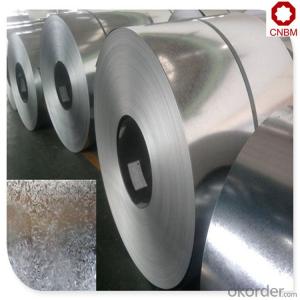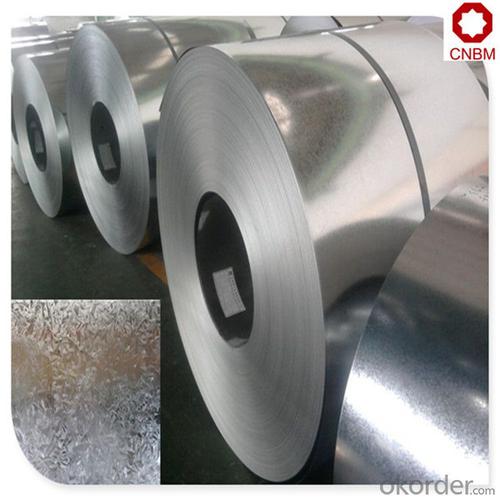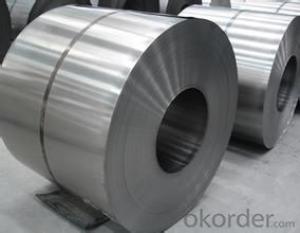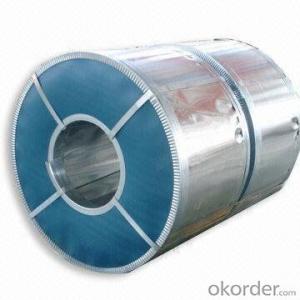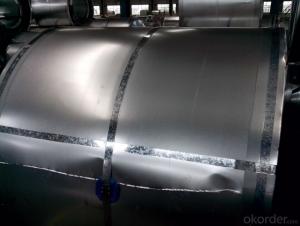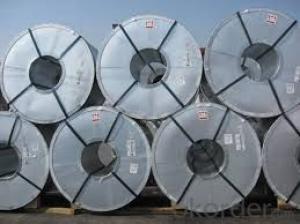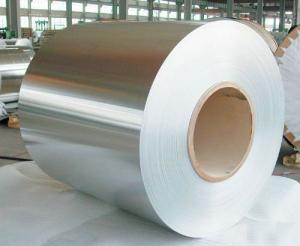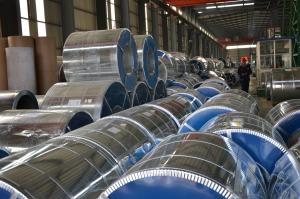Galvanized steel coil z275 stander hot dipped
- Loading Port:
- China main port
- Payment Terms:
- TT OR LC
- Min Order Qty:
- 25 m.t.
- Supply Capability:
- 36782 m.t./month
OKorder Service Pledge
OKorder Financial Service
You Might Also Like
Specification
Hot-dip galvanized steel coils are available with a pure zinc coating through the hot-dip galvanizing process. It offers the economy, strength and formability of steel combined with the corrosion resistance of zinc. The hot-dip process is the process by which steel gets coated in layers of zinc to protect against rust. It is especially useful for countless outdoor and industrial applications. Production of cold formed corrugated sheets and profiles for roofing, cladding, decking, tiles, sandwich walls, rainwater protective systems, air conditioning duct as well as electrical appliances and engineering.
Main Features of the Hot-Dip Galvanized Steel Sheet:
• Excellent process capability
• Smooth and flat surface
• Workability, durability
• Excellent anticorrosive property
• High strength
• Good formability
• Good visual effect
Technology test results:
Processability | Yield strength | Tensile strength | Elongation % | 180°cold-bending |
Common PV | - | 270-500 | - | d=0,intact,no zinc removal |
Mechanical interlocking JY | - | 270-500 | - | d=0,intact,no zinc removal |
Structure JG | >=240 | >=370 | >=18 | d=0,intact,no zinc removal |
Deep drawn SC | - | 270-380 | >=30 | d=0,intact,no zinc removal |
EDDQ SC | - | 270-380 | >=30 | d=0,intact,no zinc removal |
Standard and Grade :
Hot-dip galvanized steel coils | ||||
ASTM A653M-06a | EN10327:2004/ 10326:2004 | JISG 3302-2010 | AS-NZS 4534-2006 | |
Commercial quality | CS | DX51D+Z | SGCC | G1+Z |
Structure steel | SS GRADE 230 | S220GD+Z | SGC340 | G250+Z |
SS GRADE 255 | S250GD+Z | SGC400 | G330+Z | |
SS GRADE 275 | S280GD+Z | SGC440 | G350+Z | |
SS GRADE 340 | S320GD+Z | SGC490 | G450+Z | |
SS GRADE550 | S350GD+Z | SGC570 | G550+Z | |
S550GD+Z | G550+Z | |||
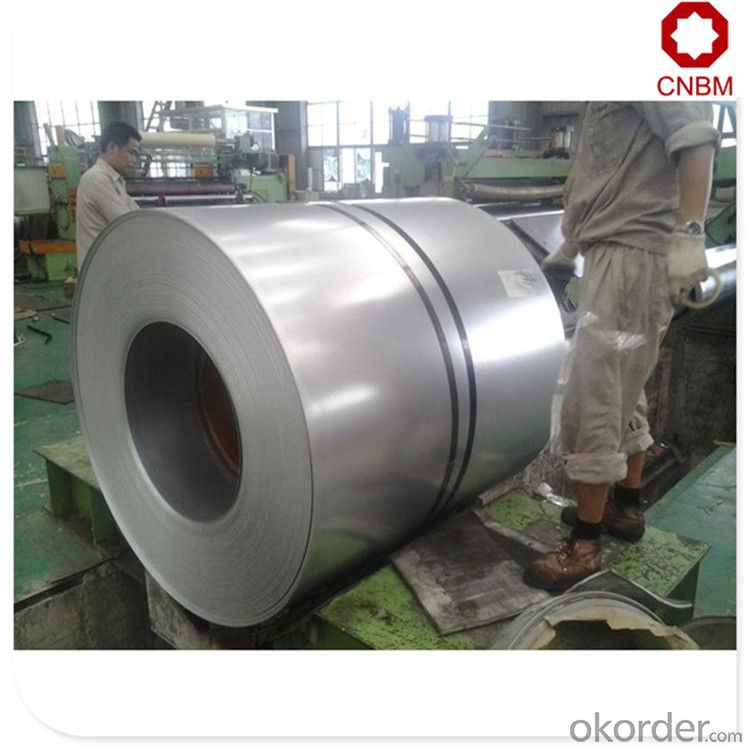
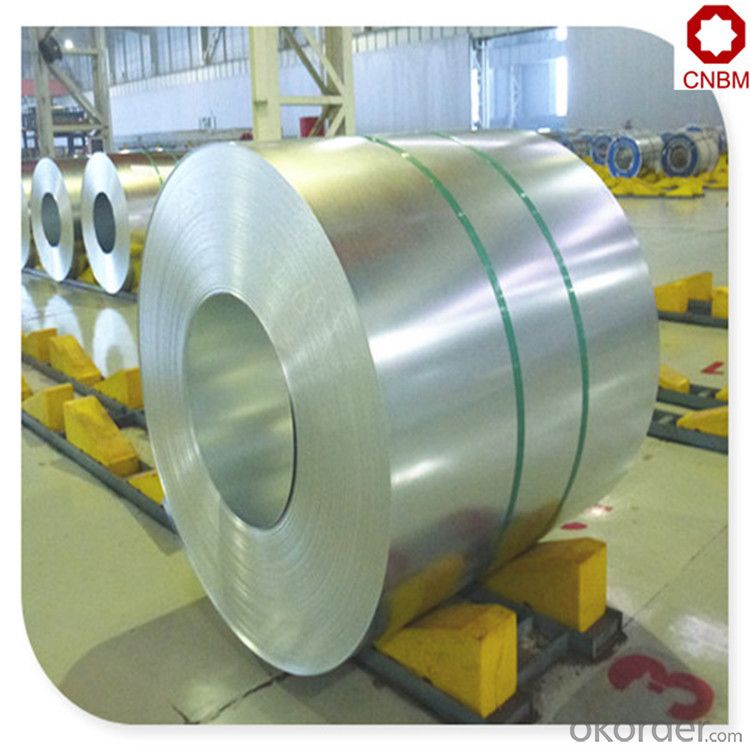

FAQ
Q: How do you guarantee the quality of your product?
A: Every process will be checked by responsible QC which insures every product's quality.
Q: How much is your delivery time?
A: Normally within 30 days of receipt of LC original or prepayment, but mostly according to the specific requirements or the quantity
Q: I need sample, could you support?
A: We can supply you with the sample for free, but the delivery charges will be covered by our customers. For avoiding the misunderstanding, it is appreciated if you can provide the International Express Account for Freight Collect. Also you can have a visit to us, welcome to CNBM!
Certificate:
CNBM International is highly recognized by its business partners and clients all over the world and has obtained rapid development under the spirit of win-win. We will carry on the mutual beneficial, innovative and revolutionary trading structure as we did before, create value for our employees, share holders and clients and benefit the whole society in our future development
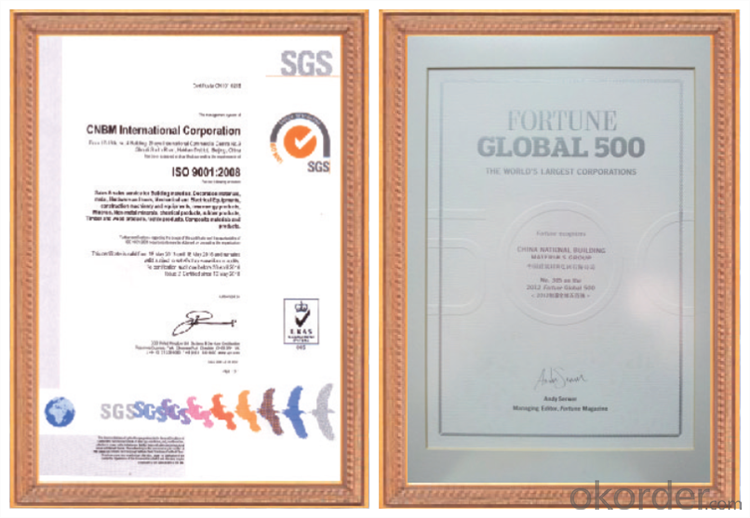
- Q: What are the safety precautions when working with steel coils?
- When working with steel coils, it is important to follow several safety precautions. Firstly, workers should wear appropriate personal protective equipment (PPE) such as gloves, safety glasses, and steel-toe boots to protect themselves from potential injuries. Additionally, they should ensure that the work area is well-lit and free from any trip hazards. Proper lifting techniques should be used to prevent strains or sprains, and workers should be trained on how to safely operate any machinery or equipment involved in handling the coils. Regular inspections of the coils, checking for any defects or damages, should also be conducted to avoid accidents. Lastly, workers should be aware of the potential hazards associated with working with steel coils, such as sharp edges, pinching points, and the risk of heavy objects falling, and take necessary precautions to minimize these risks.
- Q: How are steel coils inspected for coil set?
- Steel coils are inspected for coil set using a variety of methods and equipment. Coil set refers to the curvature or shape of the coil, which can impact its performance and usability in various applications. One common method of inspecting steel coils for coil set is through visual inspection. Experienced operators or inspectors carefully examine the coils for any visible deformities or irregularities in their shape. This can be done by unrolling a portion of the coil and checking for any signs of buckling, twisting, or unevenness. Visual inspection is a straightforward and cost-effective way to identify obvious coil set issues. In addition to visual inspection, more advanced techniques are also used to accurately measure and quantify coil set. One such method is the use of a straight edge or a template. The straight edge is placed along the length or width of the unrolled portion of the coil, and any gaps or deviations from the straight edge indicate the presence of coil set. This method provides a more precise measurement of the extent and severity of the coil set. Another common technique is the use of specialized tools such as a non-contact laser measurement system. This system utilizes lasers to project a line on the surface of the coil and measures the distance between the line and the coil. Any variations in this distance indicate the presence of coil set. This method is highly accurate and provides detailed data about the coil's shape and curvature. Other methods may include using mechanical devices such as rollers or tensioners to unroll and measure the coil's shape. These devices apply controlled pressure to the coil to straighten it out, and any resistance or deviations encountered during the process are indications of coil set. Overall, the inspection of steel coils for coil set involves a combination of visual examination and precise measurement techniques. These methods help identify and quantify any deformities or irregularities in the coil's shape, allowing manufacturers and customers to make informed decisions about the usability and quality of the steel coils.
- Q: Do any tour players use steel shafted woods? And are there any real advantages to having steel shafted woods? I have only played with one person to use steel shafted woods, he tells me thats because he cant hit it straight with graphite, however he is a very short hitter.
- I'd be very surprised if there are any tour players still using steel shafts on their woods (I did actually see Tiger with a steel shaft on a driver during a clinic in 2002). Top end graphite shafts have gotten so much better there's just no reason for pros not to use them anymore. That being said, I use a 45 True Temper stiff steel shaft in my driver (Cobra X-speed, 9.5*). Graphite is longer than steel, but the distance I've lost is minimal (maybe 10 yards and I still put it out there 250+ consistently). The extra weight has actually helped me stay in control which has improved my overall driving considerably, and the very low torque in a steel shaft has paid off huge in accuracy. You're paying minimum $60 (or more) for a graphite shaft with a similar torque rating to any steel shaft. I hit easily twice as many fairways since the switch. I've even switched out my other fairway woods too, the feel and control are so much nicer. I've considered going with a 46 on the driver to try to regain some of the distance, and at $7 per shaft I can actually just go do that whenever I want. Don't get me wrong, if I were playing for money or flirting with par I'd invest in good quality graphite stuff no question, but it doesn't make sense to me right now. I'd recommend to anyone looking for more consistency out of their woods to take $20 to your golf shop and try it out. It's a lot cheaper than the alternatives.
- Q: I am working on a hydrogen generator, but the stainless steel I am using corrodes and turns the water brown. Can anyone tell me if there is stainless steel that does not corrode, and if so, what is it called and where can I get some.Thank you.
- All stainless steel will corrode in certain conditions. Some varieties are worse than others. For instance grade 409 which is used for car exhausts (and other things) will rust. For the most suitable grade call a local steel supplier which carries stainless steel. Some of these companies will have a catalog of available grades and the appropriate uses. It would probably help to let them know what types of chemicals are present and what temperature the water is. You may want to call several suppliers, the quality of answer you get may vary quite a bit from company to company. The cost of exotic grades of stainless can be quite high. you may have to use a less appropriate grade if you can't justify the cost. If corrosion is a very serious concern for this be forewarned that stainless steels can be contaminated by contact with carbon steel (ordinary steel). I have seen rust form on stainless steel after a carbon steel bar was set down on the stainless steel. The carbon steel will leave trace amounts under prolonged contact. I have even seen signs of contamination of stainless steel direct from the supplier.
- Q: Can steel coils be deep-drawn?
- Yes, steel coils can be deep-drawn. Deep drawing is a metal forming process where a sheet metal blank is drawn into a die cavity to create a desired shape. Steel coils, which are flat strips of steel, can be fed into a deep drawing machine and formed into various complex shapes through this process.
- Q: My 8-year-old and 9-year-old boys have approached me with an interesting question. Does fire burn steel? One says yes, the other says no. Help me to settle yet another debate :)
- Fire doesn't burn steel, fire is the catalyst for steel to react with oxygen and burn though technically it's oxidizing. An intense flame like that found in an Oxy-Acetylene torch will bring the steel to melting point, then the operator would toggle a lever on the torch blasting pure oxygen into the steel causing it to oxidize and fall away from the workpiece. The afore mentioned steel wool exercise illustrates the principle on metal so thin that the heat provided by a candle allows for oxidization with the oxygen present in the atmosphere.
- Q: What does "steel roll number" mean?
- The coil numbers in the steel industry are generally applicable to rolled round steel bars. A coil of steel has a specified length and weight. Different rolls have different volumes
- Q: How are steel coils used in the production of kitchenware?
- Steel coils are used in the production of kitchenware by being shaped and formed into various utensils and appliances such as pots, pans, knives, and cutlery. The coils are typically cut, stamped, and pressed into the desired shape, then undergo further processes like polishing, coating, and finishing before being assembled into the final kitchenware products.
- Q: a steel abr sells for about 879 now...a mith just over 1kany suggestions on which-keyword WHICH steel item to make-which is the best-exp wise, and steel bar conservative wise.
- If members, cannonballs. If not, steel kites, I suppose. Steel Platebody only alchs for 1200, and requires 5 bars... But I stuck with steel, till 70 smithing... cheaper, and requires less coal to make....
- Q: What are the different types of steel coil surface treatment methods?
- There are several different types of steel coil surface treatment methods, including galvanizing, painting, powder coating, and pickling. Galvanizing involves applying a layer of zinc to the steel surface to protect against corrosion. Painting provides a decorative and protective coating by applying a layer of paint. Powder coating involves electrostatically applying a dry powder onto the steel surface, which is then cured to form a durable coating. Pickling is a chemical process that removes impurities and scales from the steel surface, resulting in a clean and smooth finish.
Send your message to us
Galvanized steel coil z275 stander hot dipped
- Loading Port:
- China main port
- Payment Terms:
- TT OR LC
- Min Order Qty:
- 25 m.t.
- Supply Capability:
- 36782 m.t./month
OKorder Service Pledge
OKorder Financial Service
Similar products
Hot products
Hot Searches
Related keywords
